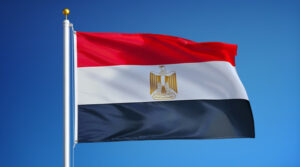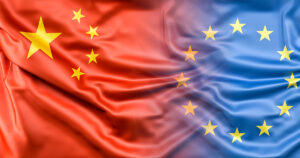
According to Serbian Economist , Spain’s economy grew by 0.8% in the second quarter of 2025 compared to the previous three months, according to final data from the national statistics agency INE. The increase in GDP compared to the same period last year is 3.1%.
Consumer spending in Spain in April-June grew by 0.8% compared to the previous quarter, business investment by 1.8%, and government spending by 0.1%.
Exports of goods and services rose by 1.3%, imports by 1.6%.
Industrial production increased by 0.9%, the service sector showed an increase of 1%, and the construction industry by 2.3%.
In the first quarter, the country’s GDP grew by 0.6% quarter-on-quarter and by 2.8% year-on-year.

This article presents key macroeconomic indicators for Ukraine and the global economy as of the end of May 2025. The analysis is based on current data from the State Statistics Service of Ukraine (SSSU), the National Bank of Ukraine (NBU), the International Monetary Fund (IMF), the World Bank, and leading national statistical agencies (Eurostat, BEA, NBS, ONS, TurkStat, IBGE). Maksym Urakin, Director of Marketing and Development at Interfax-Ukraine, Candidate of Economic Sciences and founder of the Experts Club information and analytical center, presented an overview of current macroeconomic trends.
Ukraine’s macroeconomic indicators
The first five months of 2025 saw a modest recovery amid high uncertainty. According to preliminary estimates by the State Statistics Service, Ukraine’s real GDP grew by 1.1% y/y in the first quarter of 2025 (seasonally adjusted: –0.3% q/q), reflecting the fragile but still positive dynamics of domestic demand and the adaptation of businesses to wartime conditions.
Inflationary pressure intensified in May: annual inflation accelerated to 15.9% (month-on-month: +1.3%), mainly due to a jump in food prices and the impact of energy factors. The NBU directly pointed to seasonal and supply factors and at the same time expects a slowdown in the summer months.
Against this backdrop, the NBU Board consistently maintained the policy rate at 15.5% per annum in March, April, and June, emphasizing the priority of anchoring inflation expectations and exchange rate stability.
Foreign trade in goods remained in deep deficit in January–April: exports amounted to $15.8 billion, imports to $29.3 billion, and the negative balance to about $13.4 billion. During the same period, exports of services amounted to $12.7 billion, imports to $7.4 billion. Structurally, imports are dominated by fuel, machinery, and transport, while commodity exports are concentrated in raw material groups.
Despite the trade gap, international reserves reached historically high levels at the end of May, amounting to $44.5 billion as of June 1, 2025 (thanks to official receipts and NBU operations).
At the same time, the debt burden is high: total public and guaranteed debt as of May 31, 2025, was $180.97 billion (7.52 trillion UAH).
“The current macro dynamics are more like driving with the handbrake slightly engaged: the economy is capable of moving, but without acceleration. The positive aspect is that we are maintaining growth and gradually curbing inflation. The negative aspect is the sources of this balance: reserves and external inflows are replacing investments and export revenues. If we do not convert record reserves and access to international programs into an investment impulse in manufacturing, energy, and logistics in the summer, we will have to extinguish structural fires in the fall, rather than price fires,” notes Maxim Urakin.
The expert also emphasizes the quality of demand. According to Urakin, consumption is reviving, but it is fragile and uneven — it is being sustained by the IT sector, services, and part of trade. Industry without major infrastructure repairs, cheap long-term money, and access to ports is like an engine running at minimum speed.
“Add the risks of energy during peak periods, and we get an economy that needs not isolated injections but systemic therapy: insurance of military risks for investors, fast ‘windows’ for importing equipment, duty-free corridors for exporters, and large-scale public-private partnership projects. Otherwise, we will preserve the trade deficit and dependence on external financing,” the economist stressed.
Global economy
The global picture at the end of May 2025 remains mixed. In its April WEO, the IMF forecasts global economic growth of around 2.8% in 2025, with a further decline in inflation, but with risks related to geopolitics and trade protectionism remaining.
After overheating in 2024, the US saw negative GDP growth in the first quarter of 2025: according to the BEA’s second estimate, a 0.3% decline in annual terms, explained by a sharp increase in imports and a reduction in government spending; domestic final demand remained stable. In May, core PCE inflation remained close to 2.6% y/y, and the Fed kept the rate range at 4.5–4.75% at its meeting on May 1 (in June, it continued its cycle of moderate easing).
China reported official GDP growth of 5.4% y/y (1.2% q/q) in Q1, supported by industry, transport, and IT services; at the same time, the real estate sector remains a restraining factor.
The European economy is gradually emerging from stagnation. In its spring forecast, the European Commission expects GDP growth of 1.1% in the EU and 0.9% in the eurozone in 2025; inflation is converging with the ECB’s target. The first quarter provided positive momentum: eurozone GDP grew by 0.4% q/q.
The UK was a pleasant surprise for the G7: +0.7% q/q in Q1, and on May 8, the Bank of England lowered its rate to 4.5%, maintaining cautious rhetoric due to inflation risks.
Turkey continues to experience a combination of growth and high inflation: in Q1 2025, GDP grew by 5.7% y/y, while inflation in May stood at 35.4% y/y despite tight monetary policy.
India maintains high momentum: according to official data, in the fourth quarter of the 2024/25 fiscal year (January–March 2025), real GDP grew by 7.4% y/y; for the entire fiscal year, the government estimates growth of approximately 6.5–6.9%.
Brazil added 1.4% q/q (2.9% y/y) in the first quarter, but inflation remained high in May — around 5.3% y/y, forcing the central bank to maintain tight financial conditions.
“The world in May 2025 is a multi-speed economy. The US is cooling down with negative Q1 statistics, but demand and the labor market are still driving growth. Europe, despite low growth rates, is on a trajectory consistent with its inflation target; the UK is showing resilience; China is holding steady at 5%+, but with weak private demand; India is the clear leader in terms of growth among the major economies; Turkey is experiencing high inflationary turbulence; Brazil is growing, but paying dearly for it,” comments Maxim Urakhin.
According to the expert, for Ukraine this means a new configuration of opportunities: cheaper global money will not appear quickly, but the “window” for investment in the relocation of production, energy, and defense-industrial chains is already open.
“The main thing is to design growth not as a simple restoration of the pre-war structure, but as a leap in productivity: processing instead of raw materials, logistics with high added value, digital services, and engineering that are export-scalable. Then macrofinancial stability will cease to be fragile and will become a platform for development,” added the founder of Experts Club.
Conclusion
In January–May 2025, the Ukrainian economy is in a mode of sustained stabilization: moderate annual growth at the start of the year, inflation peaking in May, record reserves, and high debt burden. The strategic choice is to transform external support and import resources into a source of investment in productivity and exports. The global context is asymmetrical and risky, but it opens up niches where Ukraine can grow faster than the world if it focuses on structural projects and policies that convert stability into development.
A more detailed analysis of Ukraine’s economic indicators is available in the monthly information and analytical products of the Interfax-Ukraine agency, Economic Monitoring.
Head of the Economic Monitoring project, Candidate of Economic Sciences Maksim Urakin

The Finnish group Olvi has signed an agreement to acquire Bosnia and Herzegovina’s largest brewery, Banjalucka Pivara, including its subsidiary in Serbia, according to the Serbian Economist Telegram channel.
The exact name of Banjalucka Pivara’s Serbian subsidiary has not been disclosed. Publications indicate that Olvi has acquired both the brewery itself and its Serbian subsidiary, expanding its presence throughout the Balkan region and gaining access to the markets of Serbia and Montenegro.
Financial and product indicators for Banjalucka Pivara (Bosnia and Herzegovina):
1. Revenue in 2024: approximately €28 million.
2. Profitability: the company is consistently profitable with growing market shares in the region.
3. Brands: including the popular Nektar, the fastest growing in all countries in the region.
By acquiring Banjalucka Pivara and its operations in Serbia, Olvi strengthens its regional network and gains access to the Balkan markets, as well as logistics corridors to Mediterranean tourist destinations.
The merger allows the Finnish company to develop its product range (non-alcoholic beverages, cocktails), strengthening its range at Banjalucka Pivara’s facilities.
The transaction is awaiting approval by the Bosnian antitrust authorities and is expected to be completed no later than the first quarter of 2026.
Source: https://t.me/relocationrs

In terms of total trade volume, Ukraine cooperates most closely with China, Poland, and Germany. These countries form the basis of the state’s foreign economic relations, exerting a critical influence on imports and exports.
China remains the leader with a total trade volume of $8.99 billion. Poland ranks second with $6.04 billion, while Germany and Turkey are almost equal with $4.28 billion and $4.25 billion, respectively. The United States ranks fifth with $2.86 billion.

The top 10 also includes Italy ($2.38 billion), the Czech Republic ($1.64 billion), Bulgaria ($1.54 billion), Hungary ($1.53 billion), and Romania ($1.50 billion).
“The top ten partners form the basis of Ukraine’s foreign trade balance. China and the EU countries account for the largest volumes of trade, but it is important to take into account the significant negative balance in relations with these countries,” said Maksim Urakin, founder of Experts Club and economist.
He added that although the large volume of trade indicates Ukraine’s integration into global supply chains, dependence on imports from China and Europe creates strategic risks.
“Poland and Germany are key hubs for Ukrainian exports, but at the same time they are significant sources of imports. Therefore, it is critically important to balance trade flows, preserving positive sectors such as agriculture and metallurgy, and reducing dependence on critical imports,” Urakin noted.
BULGARIA, CHINA, CZECH REPUBLIC, ECONOMY, EXPERTS CLUB, FOREIGN TRADE, GERMANY, HUNGARY, ITALY, POLAND, ROMANIA, TURKEY, UKRAINE, USA, МАКСИМ УРАКИН

Ukraine maintains a significant positive trade balance with a number of key partners, which partially offsets the deficit in relations with China and EU countries.
The largest surplus in the first half of 2025 was recorded in trade with Egypt — $605.0 million. Spain ranks second with a balance of $515.3 million, followed by the Republic of Moldova — $448.4 million. Positive dynamics are also observed in relations with the Netherlands ($357.6 million), Algeria ($276.6 million), and Lebanon ($243.8 million).
Ukraine also has a high trade surplus with Iraq ($189.0 million), Libya ($133.6 million), Saudi Arabia ($128.4 million), and Kazakhstan ($113.6 million).

“The positive trade balance indicates that Ukraine is capable of competing effectively in international markets, especially in the agricultural sector and metallurgy. At the same time, it should be borne in mind that these markets are vulnerable to changes in the global economic situation, price fluctuations, and political factors,” emphasized Maksim Urakin, founder of Experts Club and economist.
According to him, maintaining a positive balance in relations with the countries of the Middle East and North Africa is a key element of Ukraine’s foreign trade strategy.
“Egypt, Spain, and the countries of the Arab world are stable importers of Ukrainian agricultural products. This is a strategic direction that needs to be developed further, as it creates a safety cushion for the economy against the backdrop of significant import costs,” Urakyn emphasized.
Analysts note that consolidating positions in the African and Middle Eastern markets could become a long-term factor in strengthening Ukraine’s foreign economic balance.
Agricultural exports, ALGERIA, ECONOMY, EGYPT, EXPERTS CLUB, FOREIGN TRADE, IRAQ, KAZAKHSTAN, LEBANON, LIBYA, MOLDOVA, NETHERLANDS, positive balance, SAUDI ARABIA, SPAIN, UKRAINE, МАКСИМ УРАКИН

China remains the undisputed leader among Ukraine’s trading partners in terms of import volume. In the first six months of 2025, Ukraine imported Chinese goods worth US$8.15 billion. This is more than twice the figures for Poland ($3.58 billion) and Germany ($3.18 billion), which ranked second and third, respectively.
High import volumes were also recorded from Turkey ($2.53 billion) and the United States ($2.31 billion). Italy, the Czech Republic, Slovakia, Bulgaria, and France round out the top ten key suppliers with volumes ranging from $1.2 billion to $979 million.

“The formation of such an import structure indicates Ukraine’s excessive dependence on Chinese goods, especially in the electronics, technology, and industrial products segments. Such an imbalance poses risks to economic stability, as any political or logistical restrictions will immediately affect the domestic market,” emphasized Maksim Urakin, founder of Experts Club and economist.
At the same time, experts point to the diversification of supplies from European Union countries. Poland, Germany, Italy, and France together account for more than $8.5 billion in imports, forming a significant segment of the domestic consumer and industrial market.
Economists predict that, provided the hryvnia exchange rate remains stable and import flows continue at current levels, the trade deficit with China will continue to grow. This will require an adjustment of state trade policy towards stimulating domestic production and searching for alternative markets.
ACTIVE GROUP, CHINA, ECONOMY, EU, EXPERTS CLUB, GERMANY, IMPORTS, POLAND, SunFlower Sociology, TRADE BALANCE, TURKEY, UKRAINE, USA, МАКСИМ УРАКИН